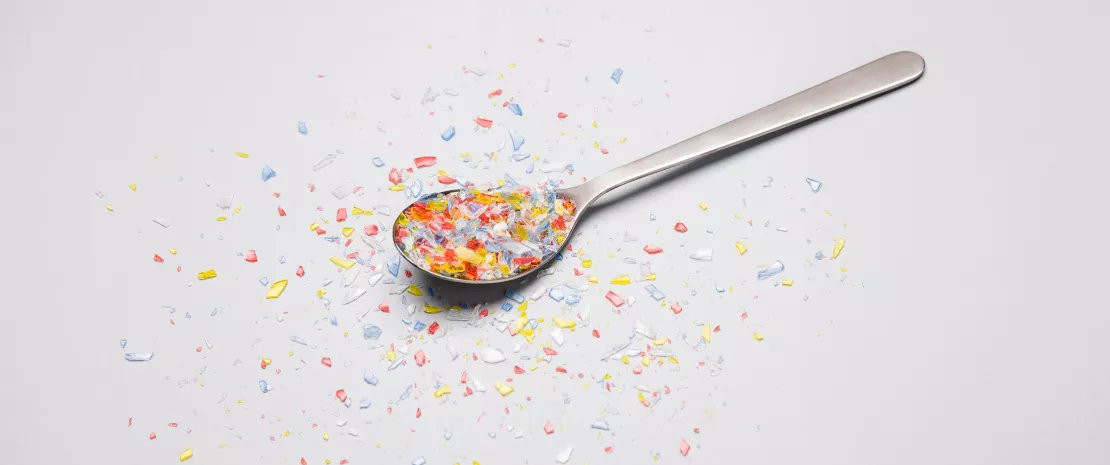Inflammatory Bowel Disease (IBD): do microplastics condition severity?
Microplastics appear to be linked to Inflammatory Bowel Disease (IBD). More precisely, their fecal concentration, size and chemical origin vary according to whether patients suffer from Inflammatory Bowel Disease (IBD) or not, and the severity of the condition.
Sources
This article is based on scientific information

About this article
Microplastics (MPs) are now everywhere, including in what we eat and the air we breathe. Does this increased human exposure present a health risk? Although the answer to this question is still largely unknown, researchers suspect a link, in the digestive system, with an increased risk of inflammation, oxidative stress, increased intestinal permeability and microbiota dysbiosis. This is an already long list, to which we may have to add IBDs, such as Crohn’s disease and ulcerative colitis, if we are to believe the results of a study comparing the characteristics of fecal MPs in 52 IBD patients and 50 healthy subjects from 10 Chinese provinces.
Microplastics in stools: Significant differences
First observation: the researchers detected MPs in all stool samples. Most were much smaller than 300 µm and shaped in the form of sheets (1 MP in 2) or fibers (1 MP in 3).
In contrast, MP concentrations differed according to the person’s state of health. The stools of IBD patients contained:
- 50% more MPs (41.8 pieces/gram of dry fecal matter, vs 28.0 in healthy subjects);
- more very small MPs (<50 μm), whereas those of healthy participants contained MPs measuring 50 to 300 μm;
- a different relative abundance of each type of MP in terms of its chemical nature, among the fifteen or so types found. In the stools of healthy participants, the researchers found mainly PET, a plastic typical of water bottles (22.3%), and to a lesser extent polyamides from textiles (8.9%) and polypropylene typical of food packaging (8.7%).
In IBD participants, PET (34.0%) and polyamides (12.4%) were more abundant, followed closely by the type of PVC found in pipes, PVC floors, etc. (10.3%), and ahead of polypropylene (9.5%).
Finally, the researchers demonstrated a positive correlation between fecal MPs and IBD severity. Two hypotheses are therefore possible: either exposure to MPs contributes to the disease; or the disease influences MP retention.
Bottled water and fast food are suspected
So where do these MPs come from? Based on the answers to their questionnaire, the team showed that the concentration of MPs in stools increased twofold when drinking bottled water (vs boiled tap water). This is because bottled water contains 22 times more MPs, in particular PET, than tap water.
22 Bottled water contains 22 times more MPs, in particular PET, than tap water.
Other factors that went hand in hand with a near twofold increase in fecal MP concentration were consumption of fast food (vs homemade food) and exposure to dust at work or in daily life.




